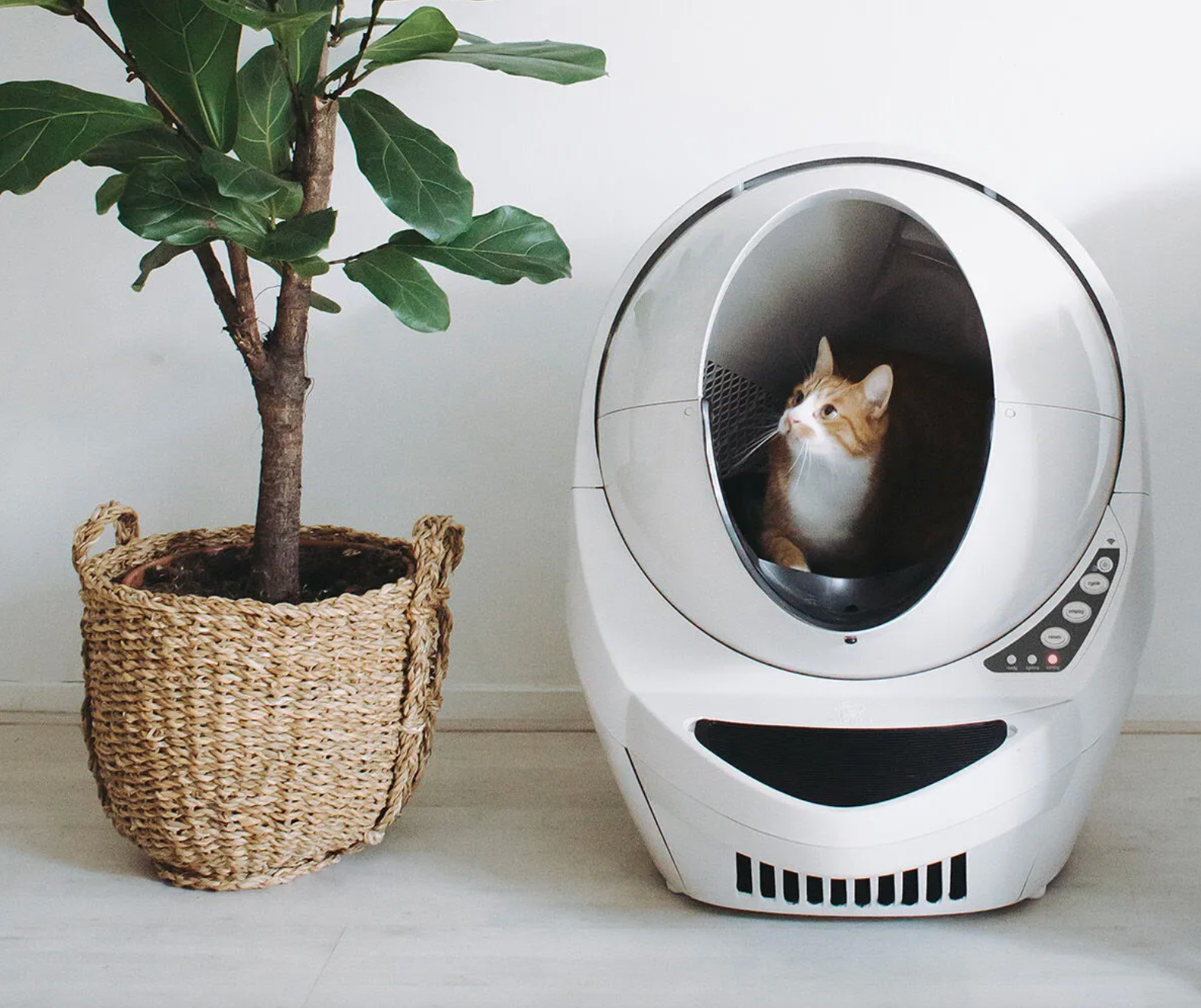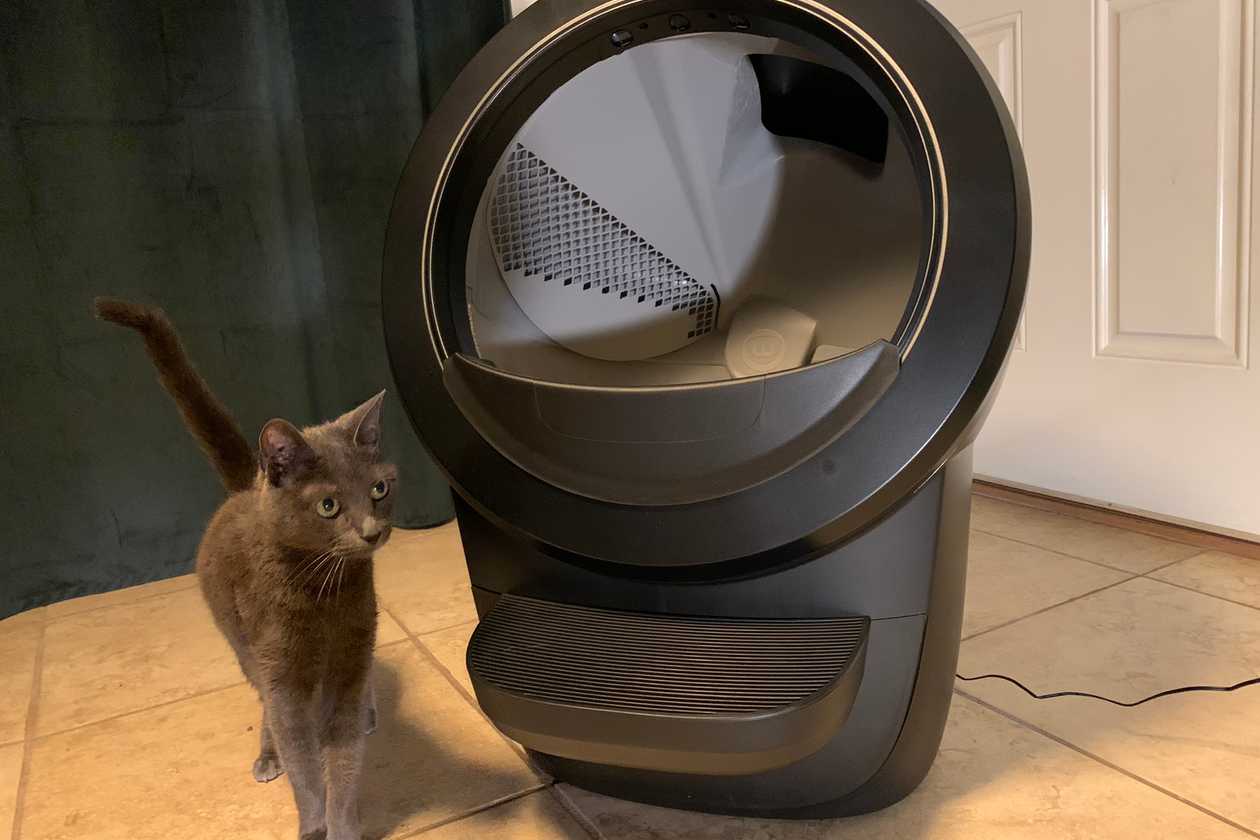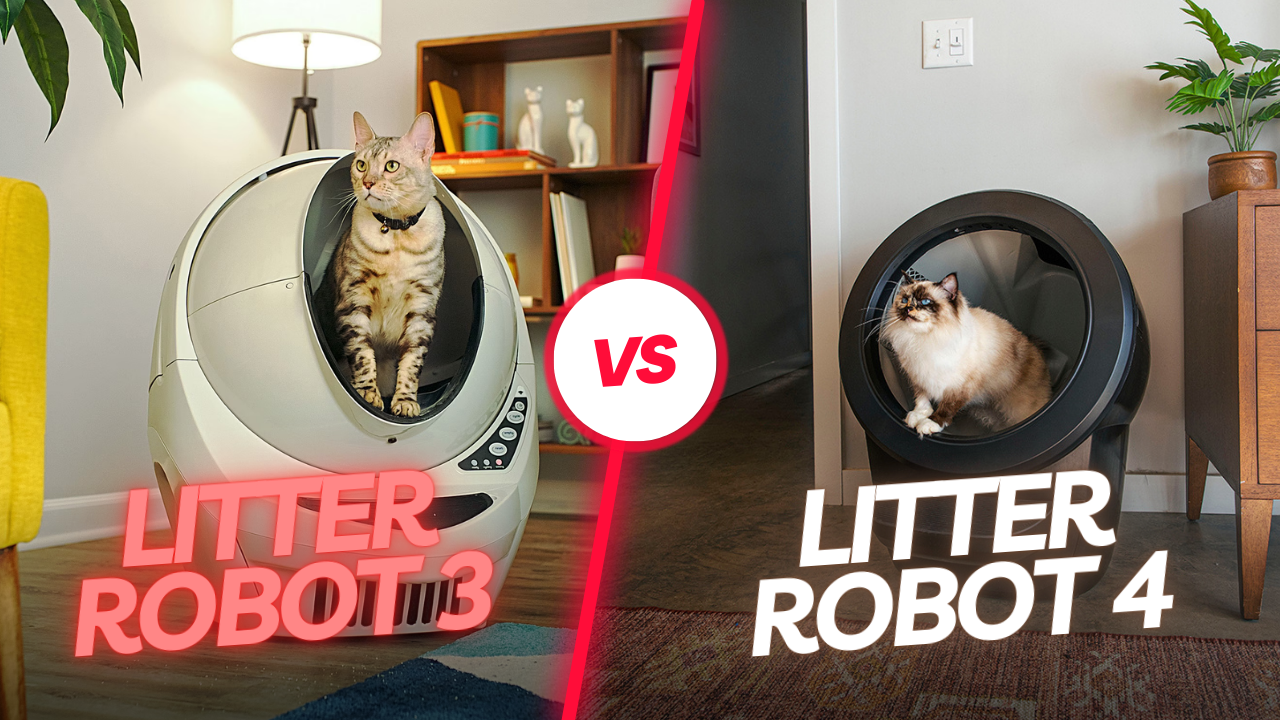Some cats may initially be afraid of a Litter Robot due to its automatic cleaning motion. Timid or skittish cats are more likely to exhibit caution or fear.
Introducing a Litter Robot to your feline friends can be a leap into modern pet care. This innovative device promises to keep your home odor-free and reduce the hassle of daily litter box maintenance. Yet, transitioning from a traditional litter box to a high-tech solution isn’t always seamless.
Cats are creatures of habit, and the unfamiliar sounds and movements of a Litter Robot can be startling to them. It’s essential to acknowledge that each cat has a unique personality; while some may adapt quickly to the new system, others need time to become comfortable with the automated cleaning processes. By understanding the varied reactions cats can have to this device, pet owners can navigate the introduction more effectively, ensuring a stress-free experience for their beloved pets.
Cats And The Litter Robot
Introducing a Litter Robot to your cat can feel like a leap into the future for pet care. Cats’ responses to new devices like this can vary wildly. Let’s delve into what you might expect when bringing this piece of technology into your feline’s life.
Common Feline Reactions To New Gadgets
Cats are creatures of habit, and new gadgets can provoke an array of responses. While some feline friends might be intrigued by a Litter Robot, others could approach it with caution. Here’s what to look for:
- Curiosity: Many cats will sniff and inspect the new object carefully.
- Hesitation: Initial hesitation is normal; give your cat time to adjust.
- Avoidance: A cat might avoid the Litter Robot at first. Patience is key.
- Playfulness: Some mischievous kitties might see the Litter Robot as a toy.
- Acceptance: With time, most cats will start using the Litter Robot without worry.
It helps to introduce the Litter Robot gradually. Leave it turned off initially. Let your cat explore it at their own pace.
The Litter Robot: A Technological Marvel In Cat Care
The Litter Robot stands as a game-changer in maintaining your cat’s hygiene. It comes packed with features designed to make a cat owner’s life easier. Automatic cleaning means less hands-on time scooping, and odor control systems work to keep your home smelling fresh.
| Feature | Benefit |
|---|---|
| Self-Cleaning | Minimizes scooping chores |
| Odor Control | Helps keep home odor-free |
| Waste Drawer Full Indicator | Notifies when it’s time to empty |
| Adjustable Cycle Timer | Customizes cleaning to your cat’s needs |
Every feature is tailored to cater to your cat’s comfort and simplify maintenance. Ensure the benefits are clear to your cat. Place the Litter Robot in a familiar spot. Let your cuddly companion witness the cleaning cycle. Blend the old with the new by keeping a traditional litter box nearby as they transition. Your cat will likely embrace this high-tech helper as part of their daily life.

Credit: mangoprism.com
Feline Fear Factors
Understanding how cats interact with novel objects is key to their well-being. Considering the introduction of an automatic cleaning device like the Litter Robot, we delve into what potentially spooks our feline friends. We uncover whether the Litter Robot could trigger a cat’s natural instinct to feel scared.
Noise Sensitivity And Cats
Cats have sharp hearing and are naturally tuned to the slightest of sounds in their environment. The hum or buzz from a machine like the Litter Robot might initially be off-putting for them. It’s not just the loudness but the unfamiliarity of these sounds that can lead to fear or anxiety.
- The Litter Robot operates quietly, but the sound may perturb sensitive felines.
- Adaptation varies among cats; while some ignore it, others need time to adjust to the new sounds.
Movement And Shape: Triggers In The Feline Mind
Cats rely heavily on visual cues. The Litter Robot’s movement and unusual shape can be intimidating. The automated cleaning cycle involves motion that’s foreign to a cat. This motion may trigger their fear response.
For a cat, anything new or changing in their territory warrants caution. With the Litter Robot, patience is critical for acceptance. Giving cats time to observe and become familiar with their new litter box helps.
Unveiling The Myth
Welcome to Unveiling the Myth in our feline-focused series. Today, we delve into a curious question – Are cats afraid of the Litter Robot? As self-cleaning litter boxes gain popularity, it’s crucial to separate fact from fiction and understand our furry friends’ true feelings towards these high-tech gadgets. Let’s explore the reality behind those viral clips that portray seemingly terrified tabbies.
Often, what we believe about cats and technology is shaped by memes and exaggerated stories. While the Litter Robot’s humming and rotation might seem daunting, most cats are more resilient and adaptable than given credit for. Their initial skepticism usually gives way to curiosity, and before long, the whirring contraption becomes just another part of their daily lives.
- First encounters may invoke caution.
- Cats typically overcome initial hesitation.
- Persistent fears are rare.
A look at owners’ testimonials reveals that most cats become comfortable with the Litter Robot after a short period. Proper introduction and positive reinforcement can help make this transition smoother for our whiskered companions.
Viral videos often capture moments that are not the everyday norm. A clip might show a cat leaping five feet into the air at the sight of a Litter Robot in motion, but is it fear or just bad timing? Let’s dissect what these videos don’t show.
| Video Content | What’s Missing |
|---|---|
| Instant reaction to Litter Robot | Previous calm interactions |
| Mid-cycle interruption | Initial, peaceful curiosity |
| Cat’s exaggerated jump | Subsequent normal use |
Considering these missing pieces, it’s important to view such content with a pinch of salt. One-off reactions don’t define a cat’s overall comfort with the Litter Robot. Consistent behavior, played out over days and weeks, is a more accurate measure of a cat’s true feelings towards automated litter boxes.

Credit: research.ehl.edu
Acclimating Your Cat To The Litter Robot
Introducing your beloved feline to the futuristic Litter Robot doesn’t have to be a challenge. Many cats might initially shy away from the whirring sounds and moving parts of an automatic litter box. Here’s how to make sure your kitty warms up to their new bathroom buddy.
Step-by-step Introduction Techniques
- Place the Litter Robot in a familiar spot where your old litter box used to be. Cats love routine and this helps them see it as a friendly object in familiar territory.
- Mix some of the old litter with the new. It offers a scent that they recognize and can trust.
- Keep it turned off at first to let your cat investigate without fear. Once they’re used to it, you can turn it on.
- Encourage exploration with treats and positive reinforcement. If your cat goes near the Litter Robot, give them a treat.
- Be patient; it might take a few days or even weeks for a cat to feel completely comfortable.
Tips For Easing Anxiety Around Automatic Litter Boxes
- Start with manual scooping while the robot is off. This shows your cat that it’s just another litter box.
- Associate the box with positivity. Use a calm voice and gentle petting when they are near the Litter Robot.
- Use familiar scents, like a blanket or their favorite toy, to make the new litter box seem like part of the home.
- Offer multiple litter options during the transition period. Some cats prefer having a choice until they adjust fully.
- Never force your cat to use the Litter Robot. This could create a lasting aversion.
Success Stories And Troubleshooting
Embarking on the journey of transitioning your cat to a Litter Robot can be met with anticipation and a dose of skepticism. But with plenty of success stories and effective troubleshooting tips, a happy ending is more often than not. Let’s delve into the tales of feline friends who’ve made the switch with ease, and explore some solutions for those rare instances when the Litter Robot might not be the right match.
From Hesitant To Habit: Cats Who’ve Adapted
Cats are creatures of habit, and change can be daunting. Meet Max, a timid tabby who initially viewed his new Litter Robot with suspicion. His story is among many chronicling a cat’s journey from hesitant to habitual user. With patience and the right approach, Max’s hesitancy turned into acceptance.
- Begin with acclimation: Place the unit near the old litter box.
- Keep it manual: Deactivate the automatic features initially.
- Use familiar litter: Mix old litter with new ones to retain the familiar smell.
- Praise and treats: Positive reinforcement works wonders.
These steps led to success for many cat owners, and Max eventually began using the Litter Robot without hesitation.
When The Litter Robot Isn’t A Good Fit: Alternative Solutions
Despite a high success rate, some cats might not warm up to the Litter Robot. Sophie, a spry siamese, never quite got comfortable with the high-tech box. In cases like hers, finding suitable alternatives is the next best step. Owners have several options to consider:
| Alternative | Advantages | Suitable For |
|---|---|---|
| Top-entry litter boxes | Reduces litter tracking and offers privacy | Cats who like cozy spaces |
| Self-cleaning boxes (non-robotic) | Automatic cleaning without robotics | Cats spooked by movement or noise |
| Large, traditional litter boxes | Familiar design and easy access | Older cats or those with mobility issues |
By exploring these alternatives, cat owners can ensure their pets are comfortable and happy, even when the Litter Robot isn’t their first pick.
Expert Insights
Discovering the intricacies of feline behavior extends to their bathroom habits. Expert insights delve into whether the innovative Litter Robot aligns with kitty comfort and psychology.
Veterinarians Weigh In: Is The Litter Robot Suitable For All Cats?
Veterinarians advocate for cat health and wellness, which includes stress-free litter box experiences.
- The Litter Robot may be daunting for timid cats or those resistant to change.
- Observation is key; each cat’s reaction can vary greatly.
- Older cats or those with mobility issues might find traditional boxes more suitable.
- Integration should be gradual; take cues from your cat’s comfort levels.
Behaviorists’ Tips For A Fear-free Litter Box Experience
Feline behaviorists specialize in the nuances of cat behavior. Their strategies often lead to positive litter box usage.
- Place the Litter Robot in a familiar spot where an old litter box was located.
- Keep the Litter Robot turned off initially to avoid startling sounds.
- Encourage exploration with treats and gentle guidance, promoting a safe association.
- Gradually introduce the robot’s functions as your cat becomes more comfortable.

Credit: cats.com
Frequently Asked Questions Of Are Cats Afraid Of Litter Robot
Do Cats Fear Automatic Litter Boxes?
Cats may initially be wary of automatic litter boxes like the Litter Robot due to their movement and noise. However, most cats can acclimate to these devices over time. It’s important to introduce the Litter Robot gradually and with positive reinforcement.
How To Acquaint A Cat With A Litter Robot?
To help a cat get used to a Litter Robot, place it near the old litter box without turning it on. Once the cat investigates it, start the machine manually at first. Over time, switch to automatic mode as the cat becomes more comfortable.
Can The Litter Robot Scare Kittens?
Kittens can be more adaptable but also more skittish with new devices. A Litter Robot may initially scare them. It’s crucial to supervise their first interactions and ensure the robot is in a quiet mode to avoid overwhelming them with noise.
What Is The Quietest Time To Operate Litter Robot?
The Litter Robot has a sleep mode feature for quieter operation, usually recommended for nighttime use. Setting the device to run during the day when it’s less disruptive can also be beneficial for skittish cats.
Conclusion
Understanding feline behavior is key in evaluating their interaction with technology like the Litter Robot. While some cats may initially react with suspicion or fear, others adapt quickly. It’s essential to introduce any new device, including an automatic litter box, with patience and care, ensuring your cat feels safe and comfortable.
Embracing these steps will help your cat overcome apprehension and might turn the Litter Robot into their new favorite spot.



